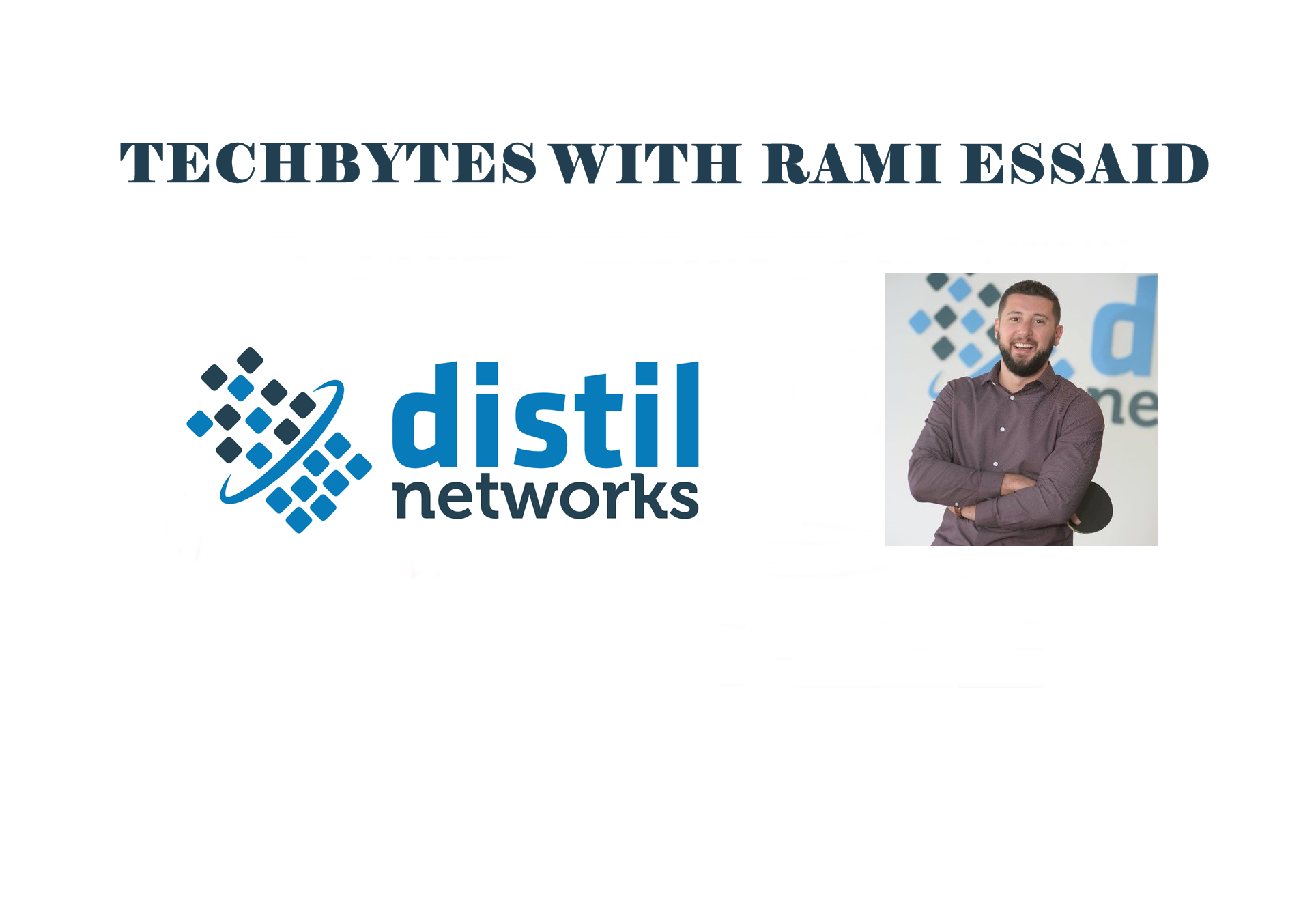
In May, global leader in bot detection and mitigation, Distil acquired real-time human detection company Are You A Human (AYAH). The acquisition was followed by the launch of Distil Bot Discovery for Google Analytics—a product that leverages AYAH’s technology. We spoke to Rami Essaid, Co-Founder & CEO of Distil Networks to understand how bots use browser automation to interact with websites, simulating human interactions.
MTS: What was the idea behind conceiving Distil, a bot detection company?
Rami Essaid: I’ve always had the entrepreneurial bug. After selling my first company, I went to work at a web security company. I was struck by how many customers were asking for a solution to combat malicious bots bombarding their websites and was inspired to face this problem head on. When Distil was founded in 2011, no one was talking about bots. Now, we’re seeing bots discuss everywhere, from how they are being used in major hacks to their impact on social media. Even Congress passed the BOTS Act in December 2016 to combat the use of bots to scalp tickets online. It’s become a bigger issue than I could have ever imagined.
MTS: Distil acquired Are You A Human last week. How did Distil identify AYAH to be a part of its offering? How did you prepare for the new addition?
Rami Essaid: When we founded Distil, we aimed to build the most comprehensive solution on the market to detect and mitigate threats associated with malicious bots. Are You A Human’s technology and method for identifying bots is different, but complementary to Distil. We added their patented biometric data analysis technology to make our bot detection even better, but also added new data from millions of new sites and users. Through the acquisition, we are also excited to onboard a team of experienced software engineers and data scientists who have dedicated the past seven years to understanding how online businesses have been plagued by the bot problem.
MTS: How are bots for web and APIs different? How does Distil Bot Discovery for Google Analytics work?
Rami Essaid: The difference between bots on websites and APIs is technical, but the end goal is the same. They are seeking to abuse your web application using an automated threat to achieve that goal. In the past, bots simply went to websites because they were the only way to interact with your data and system. As more sites use web APIs, attackers are looking to exploit this new area.
Bots that target websites will generally use browser automation or headless browsing software to interact with websites in a simulated browser session, allowing it to penetrate deeper into applications (such as sections behind the login page) and avoid basic protections.
If the person behind the bot finds an API that delivers the data they covet, they can program their bot to interface directly with an API, bypassing the website altogether. If the API is unsecured, the bot can be programmed to make API calls and extract the data without any impediments.
Bots make up almost 40% of traffic on the internet, but Google Analytics bot filtering only removes less than 1% of them. With the acquisition of Are You A Human, we also launched Distil Bot Discovery for Google Analytics, a one-click offering that integrates with Google Analytics to find and filter bot traffic. With this plugin, Distil analyzes how users interact on a website, differentiates whether each user is a human or a bot, and drives that data directly into Google Analytics. This increases the accuracy of Google Analytics reports that filter out bot data, meaning users can make better and more accurate business decisions.
Read More: Distil Networks Enables Websites to Clean up Google Analytics for Free
MTS: What are Braintrust and Bot Defenders?
Rami Essaid: Braintrust refers to the level of talent of the employees at both Distil and Are You A Human. The people we have on board fighting the bot problem are truly experts in the field and the best at what they do. These people are the best Bot Defenders in the business.
MTS: How are marketing and advertising campaigns affected by bots?
Rami Essaid: When bots visit a website, they trigger an impression, and also pick up cookies. That means that any advertising campaign you run is wasting money by showing impressions to bots, who will never make a purchase. And, since bots pick up cookies, you’ll waste even more money in retargeting or audience extension campaigns. Bots that hit your site lead to inaccurate visitor tracking and reporting, which renders business marketing tools ineffective and distorts performance metrics. This makes it incredibly difficult for marketers and advertisers to determine the success of their campaigns.
MTS: Why should CMOs integrate Bot Defense as part of their Martech and Adtech investments?
Rami Essaid: CMOs should absolutely integrate Bot Defense, and consider how they attack their organization’s bot problem as a whole. When bots are flooding a website instead of humans, advertising resources are drained, and traffic and ad revenue are diverted to the bad guys’ sites. That means not only loss of ad revenue but damaged reputations. We enable digital publishers to determine an honest impression of their website’s traffic.
Recommended Read: Distil Networks Acquires Are You A Human to Build and Provide Stronger ‘Bad Bot’ Defense
MTS: Would advancements in AI and programmatic, increase the threats posed by bots?
Rami Essaid: Absolutely! As the programmatic ecosystem grows and gets more complicated, there is more incentive to build sophisticated bots to game the system. As you lose visibility to exactly where your ad is running, and who you bought it from, it gets easier for bad actors to jump in the middle of that exchange and create phony bot impressions that are harder to track and root out. Many bots don’t care about advertising. They visit sites to hack accounts, steal content, or verify credit card numbers. But these bots still count as an impression when they hit a site, and create lots of ad waste, even though it’s not intentional.
MTS: What are the analytics that Distil provides pertaining to the mitigation of the risks posed by bots?
Rami Essaid: First of all, we offer the Bot Discovery for Google Analytics plugin that allows any website to see the proportion of bots on their website. Within minutes a business can easily and clearly see the amount of bots versus human traffic. Knowing you have a problem is the first step to solving it – Bot Discovery provides this visibility.
When businesses deploy the full Bot Defense for Web product they also receive deep analytics into bot behavior. By seeing the human traffic compared with good and bad bots, they see the variations, and traffic spikes, over time. Amongst the many analytics reports, Distil includes an understanding of the false positives generated by revealing how many CAPTCHAs were solved. This audit provides deep visibility into the efficacy of Distil as a bot mitigation solution. Amongst the many other reports available, we also provide rate limit recommendations based upon predictive analytics.
Another key measure is our proactive defense using machine learning technology that predicts a bot based on correlating dozens of dynamic classifications as well as pinpoints behavioral anomalies specific to a certain site’s unique traffic patterns. This is in stark contrast to the reactive, rules-based approach inherent to web application firewalls.
MTS: Thanks for chatting with us Rami. We look forward to having at MarTech Series again for more insights.
Stay tuned for more on business insights on marketing automation, content marketing, video ad tech, programmatic and header-bidding technologies. To participate in our Tech Bytes program, email us at news@martechseries-67ee47.ingress-bonde.easywp.com











